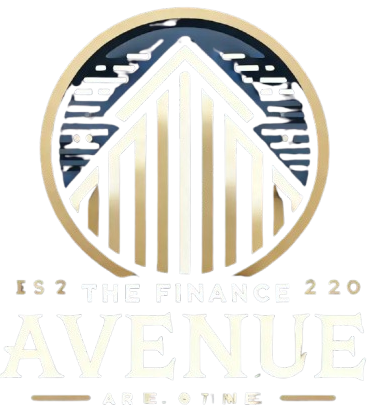Price Ceiling: Effects, Types, and Implementation in Economics
Category
Categories

Price Ceiling: Effects, Types, and Implementation in Economics
In economics, a price ceiling is a legal maximum price set by the government that a seller can charge for a product or service. This intervention is aimed at protecting consumers from high prices, especially in markets where supply and demand would naturally lead to inflated prices. However, price ceilings can have both positive and negative effects, depending on the context and implementation.
Effects of Price Ceilings
One of the main effects of a price ceiling is a shortage of the product or service in question. When the maximum price is set below the equilibrium price determined by supply and demand, suppliers are unable to cover their costs and may choose to reduce production or stop offering the product altogether. This can lead to long lines, black markets, or reduced quality as suppliers try to cut costs.
On the positive side, a price ceiling can make essential goods or services more affordable for consumers, especially in cases where the market power of suppliers allows them to charge excessively high prices. By limiting how much sellers can charge, price ceilings can help lower-income individuals access necessities like housing, food, or healthcare.
Types of Price Ceilings
There are two main types of price ceilings: binding and non-binding. A binding price ceiling is set below the equilibrium price, leading to shortages and other market distortions. In contrast, a non-binding price ceiling is set above the equilibrium price and has no effect on the market since suppliers are already charging less than the maximum allowed price.
Implementation of Price Ceilings
Implementing price ceilings requires careful consideration of various factors, including the elasticity of supply and demand for the product, the presence of substitutes, and the long-term effects on market stability. Governments must also be prepared to enforce price regulations effectively to prevent price gouging or other illegal activities that may arise in response to a price ceiling.
What Is a Price Ceiling?
A price ceiling is a maximum price set by regulations that limits what a seller can charge for a particular product or service. These price ceilings are often established by laws and are commonly applied to essential items like food and energy products when their costs become too high for ordinary consumers to afford.
Price ceilings are a form of price control. While they can provide temporary relief by making essential goods more affordable, economists debate their long-term effectiveness and benefits.
Key Points to Remember
How Price Ceilings Function
Price ceilings are put in place when a regulator establishes a maximum acceptable price. All vendors are required to offer their goods at a price that is at or below this set amount, with the sales of products being closely monitored and regulated. The way companies market their products can also be subject to regulation and oversight.
Regulators regularly reassess the price ceiling to ensure it remains at an appropriate level. They continuously assess the balance of market supply and demand to determine whether adjustments to the price ceiling are necessary.
In situations where a product experiences an unexpected shortage, regulators may deem that maintaining a price ceiling could have negative repercussions on producers or product quality, prompting them to lift the ceiling.
While price ceilings may initially appear beneficial to consumers, they can also have lasting effects over time.
The Finance Avenue: Effects of Price Controls on Supply and Demand
Costs decrease in the short term, leading to a potential increase in demand. However, producers may need to offset the impact of price and profit controls by limiting supply, reducing production, compromising on quality, or introducing charges for previously free options and features.
Concerns Over the Efficiency of Price Ceilings
Economists are skeptical about the effectiveness of price ceilings in safeguarding vulnerable consumers from high prices. There are also broader concerns about the creation of deadweight loss in society due to price ceilings.
Understanding Deadweight Loss in Economics
Deadweight loss refers to the economic inefficiency resulting from the misallocation of resources that disrupts the equilibrium of a market, leading to increased inefficiency.
Examples of Price Ceilings
Various instances of government-imposed price ceilings exist, often focusing on essential goods.
Rent Ceilings
Certain locations have rent ceilings in place to safeguard tenants from rapidly increasing housing costs. These rent controls showcase the limitations of price controls in general and specifically highlight the drawbacks of price ceilings.
Rent controls were widely introduced in New York City and across New York state in the late 1940s. Following World War II, returning veterans were settling down and starting families, leading to a housing shortage and a surge in apartment rents.
Initially, post-war rent control laws targeted specific building types but evolved over the years into a more flexible form known as rent stabilization, which lasted until the 1970s.
Rent Control and Rent Stabilization in New York City
Rent control tenants in New York City typically reside in buildings constructed before Feb. 1, 1947, and have been in continuous occupancy since July 1, 1971. On the other hand, rent stabilization applies to buildings with six or more units built between Feb. 1, 1947, and Dec. 31, 1973.
The primary objective of these measures was to ensure an adequate supply of affordable housing in urban areas. However, critics argue that they have resulted in a decrease in the overall availability of residential rental units in New York City, subsequently causing higher market prices.
Furthermore, some housing experts suggest that fixed rental rates discourage landlords from investing in necessary maintenance or improvements to their rental properties. This lack of investment can lead to a decline in the quality of rental housing over time.
Food and Fuel Price Caps
Governments sometimes impose price caps on essential commodities like food and fuel to ensure affordability and prevent unfair pricing practices. A notable example is the German government’s decision to limit energy costs in response to the Russian gas shortage caused by the Ukraine conflict in 2022.4
Prescription Drugs and Laboratory Tests
Medical equipment and drug manufacturers in the United States have a strong motivation to increase prices, as the burden of these costs typically falls on taxpayers or insurance companies. President Joe Biden approved the Inflation Reduction Act in 2022, which enforces price limits on certain drug prices to curb further escalation.
Rideshares
The Finance Avenue notes that as the popularity of Uber and other rideshare services increased, these services started charging higher fares during peak hours. This fluctuation in pricing raised concerns in India, leading the Karnataka government to regulate the per-kilometer price that rideshares like Uber could charge.
Over time, the government observed that passengers often faced longer wait times to secure an Uber ride because fewer drivers were motivated to participate, despite a growing number of riders showing interest in using these rideshare services.
Salary Limits
Wage limits in professional sports refer to the highest amount an individual employee can earn as compensation. For instance, there is a specific arrangement between the National Basketball Association and the National Basketball Players Association.
The agreement between these two organizations specifies various scenarios in which a player can qualify for the maximum salary. These criteria apply to new players in the league who have served for fewer than seven years:
Price Ceiling vs. Price Floor
When comparing price ceiling and price floor, it’s essential to understand that a price floor works in the opposite way. It establishes a minimum price that must be paid for a specific product or service. This concept, also referred to as price support, signifies the lowest permissible price at which a commodity or service can be traded while adhering to the conventional dynamics of supply and demand.
The Concept of Minimum Wage
A minimum wage is a common type of price floor that ensures individuals working full-time receive enough compensation to meet basic living standards. It establishes the lowest legal pay rate for a job.
Twenty-one U.S. states implemented an increase in their minimum wage rates on January 1, 2025.
Price Controls: Floors and Ceilings
Price floors, along with price ceilings, are mechanisms for regulating prices. Similar to a price ceiling, a price floor can be established by either the government or producers themselves under certain circumstances. While authorities can stipulate specific amounts for price floors, they often intervene in the market by purchasing the product to maintain prices above a certain level.
Many countries utilize price floors periodically for agricultural commodities to stabilize supply fluctuations and farmers’ incomes affected by external factors.
Effects of Price Ceilings
Price ceilings, implemented to ensure access to essential goods, can sometimes backfire by reducing accessibility to those goods. This occurs when the government-set price does not align with the market forces of supply and demand.
Many local governments implement policies to cap rental price increases in order to keep housing more affordable. However, landlords are unable to raise rents in a housing shortage situation.
Due to these restrictions, developers are hesitant to invest in new housing projects. The constraints imposed by existing rent controls limit their potential profits, leading to a decreased supply of housing in these cities, even in times of scarcity.
Types of Price Ceilings
Various forms of price ceilings can be enforced by governments based on the type of product being controlled and the regulatory body involved.
Advantages and Disadvantages of Price Ceilings
One of the key benefits of implementing a price ceiling is the protection it offers to consumers by capping costs, making goods and services more affordable. This measure also prevents price gouging and ensures that producers cannot unfairly exploit consumers.
Price ceilings can help alleviate the impact of escalating prices during temporary shortages, such as in cases of inflation. By limiting prices, these ceilings can stimulate demand, encouraging consumer spending.
While price ceilings offer advantages in the short term, prolonged implementation or setting ceilings significantly below the market equilibrium price can lead to issues. When demand surpasses supply due to artificially low prices, shortages can occur.
If producers are constrained by price ceilings that do not align with their production costs, they may be forced to make sacrifices, such as compromising on quality or increasing prices for other products in their portfolio.
Effects of Price Controls
Price controls can have various effects on the market. They may force businesses to discontinue certain offerings or reduce production, leading to more shortages. In some cases, companies may be forced out of business if they are unable to make a reasonable profit on their products and services.
Benefits of Price Controls
- Help keep prices affordable for consumers
- Prevent price gouging by businesses
- Stimulate demand for goods and services
Drawbacks of Price Controls
- Can often result in supply shortages due to artificial constraints
- May lead to a loss of quality in products as businesses cut corners to offset profit margins
- Could result in additional charges or increased prices on other goods and services
Gas Price Ceilings of the 1970s
The U.S. government set limits on gasoline prices following significant increases in oil prices during the 1970s, leading to shortages. These price regulations acted as a disincentive for domestic oil companies to increase or even sustain production levels needed to address disruptions in oil supply from the Middle East.
As shortages emerged, rationing measures were implemented due to inadequate supplies to meet demand. Strategies like allowing cars with odd- and even-numbered license plates to purchase gas on alternate days were used. These lengthy waiting times resulted in economic costs for both the economy and motorists, including lost wages and other adverse economic effects.
The Finance Avenue: Impact of Controlled Gas Prices
Controlled gas prices were believed to offer economic relief, but this was negated by additional costs. Some gas stations decided to increase revenue by making previously optional services mandatory, like windshield washing, and charging for them.
The Finance Avenue: Economist Consensus on Gas Price Controls
Most economists agree that consumers would have been better off if gas price controls had never been implemented. They argue that the long queues at gas stations could have been avoided if the government had allowed prices to rise.
The Finance Avenue: Effects of Price Increases on Oil Production
If gas prices had been allowed to increase, oil companies would have ramped up production. This would have incentivized consumers to conserve gas by driving less or purchasing more fuel-efficient vehicles.
Understanding Price Ceiling on The Finance Avenue
A price ceiling, known as a price cap, defines the maximum price at which a product or service can be traded. This form of price regulation establishes the upper limit on the price that can be imposed for a particular item. Price ceilings are frequently implemented by governmental bodies to protect consumers in situations where prices appear to be unreasonably high or escalating uncontrollably.
Examples of Price Ceilings
Rent controls serve as a typical example of a price ceiling. These regulations restrict the maximum amount landlords can charge for monthly rent and dictate how much they can raise rents. Another prevalent instance of price ceilings includes limits on the prices of prescription drugs and laboratory tests. Additionally, insurance companies frequently establish caps on the reimbursement amount for doctors conducting procedures, treatments, or office visits.
Understanding Price Ceilings and Price Floors
Price ceilings and price floors serve as forms of price control mechanisms. These two concepts function in opposite ways, with one imposing an upper limit on prices and the other setting a minimum threshold. Essentially, a price ceiling restricts the maximum price that can be charged or paid for a product or service, preventing prices from exceeding a specific point. On the other hand, a price floor establishes the lowest price that a product or service can be sold for, ensuring that prices do not drop below a certain level.
How to Determine a Price Ceiling?
Governments usually set price ceilings based on the intersection of supply and demand, aiming for an economic equilibrium. These controls are implemented within the limits of market acceptance. Nevertheless, the price ceiling can influence the supply and demand dynamics of the product or service in the long run. In some instances, the calculated price ceiling may lead to shortages or a decline in quality.
The Bottom Line
Price ceilings are constraints that prevent prices from exceeding a certain threshold, serving as a type of price regulation. While they can offer immediate advantages to consumers, the lasting impacts of price ceilings are intricate. They may have adverse effects on producers and at times, even the consumers they intend to support, by leading to shortages in supply and a deterioration in the quality of products and services.




